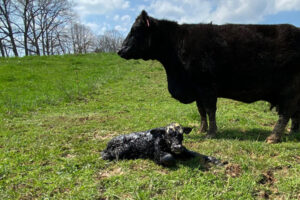Heat stress impacts energy metabolism
By Rodrigo Garcia, International Ruminant Nutrition Manager, TechMix
As summer months get closer and temperatures begin to ramp up, dairy producers from all over the world start to think of strategies to minimize the effects of heat stress on their farming operation.
Although the solution seems as simple as cooling the cow, reality has shown that fan and sprinkler systems alone are not enough to mitigate the negative effects of heat stress.
Heat stress is complex and multifaceted. Beyond reductions in milk yield, growth, impaired reproduction and increased culling, heat stress causes physiological and endocrinological changes within the animal.
Systemic effects of heat stress
- Panting leads to a state of respiratory alkalosis (high blood pH), which is neutralized by expelling bicarbonate in urine.
- The decrease in rumination results in lower production of saliva (a natural rumen buffer).
- Drooling and an altered feeding behavior (slug feeding), leads to subacute ruminal acidosis (SARA), which changes microbial population and increases endotoxin production.
Dry matter intake is reduced in times of heat stress, which lessens heat load from rumen fermentation. But the reduction in dry matter intake only accounts for half of the production losses that dairy farms often experience.
Heat stress and the gut
During hot environmental conditions, blood flow to the skin is increased to dissipate heat, resulting in intestinal hypoxia (decreased oxygen), nutrient restriction and oxidative stress. This compromises gut integrity and triggers an inflammatory response. The small intestine is one of the first tissues to be affected by heat stress. As a result of the intestinal barrier dysfunction, toxins and bacteria leak into the blood, generating systemic inflammation, immune system activation and high insulin levels in blood.
When immune cells become activated, they rely on glucose as their primary fuel source. Researchers have estimated that an immune activated system in a dairy cow consumes close to 2 kilograms (over 4 pounds) of sugar in the form of glucose per day. The immune system is then prioritized over the synthesis of milk or muscular tissue.

The psychological factor
All kinds of stress, either chronic or acute, increase plasma glucocorticoids. This also happens during heat stress, and it has a key role in impairing gut integrity and reproduction performance.
Insulin: The cornerstone of stress energy metabolism
High insulin activity prevents lipid mobilization, commonly known as NEFAs (non-esterified fatty acids), and increases glucose consumption. This endocrine adaptation happens not only in cows but across many species, including humans. The exact mechanism involved in this typical insulin increase is not fully understood by researchers yet.
At the same time the rest of the tissues become insulin-resistant to ensure glucose supply to activated immune cells.
Heat stress reduces milk quality
Besides reducing milk production, heat stress can also reduce the quality of milk. The reduction in VFAs (volatile fatty acids) production and absorption, together with a potential subacute ruminal acidosis and the inhibition of fat mobilization, plays a key role in the reduction of milk fat content during times of heat stress.
The reduced protein concentration during heat stress could be attributed to a systemic increase in amino acid utilization and a specific down thermoregulation activity of mammary protein synthesis.
At the same time, many farms experience an increase in SCC (somatic cell count) during the summer and fall seasons. Hot weather and high moisture support bacterial growth, which could lead to more cases of environmental mastitis. Simultaneously, oxidative status and stress hormones affect immune response, reducing the cow’s ability to destroy bacteria.
Heat stress and reproduction
In a similar way as the digestive system is affected, the reproductive tract also experiences reduced blood flow in heat-stressed cows, leading to a reduction in nutrient and hormone availability, which reduces fetus viability.
At the same time, estrus intensity lessens during heat stress, making estrus detection more difficult. Secondly, fertility is reduced due to a slower oocyte maturation. And finally, the survival of early embryos is compromised.
Nutritional strategies to minimize heat stress
Heat abatement strategies and dietary solutions have synergistic effects to alleviate heat load in cows. Any nutritional and management strategies to counteract heat stress should be focused on maintaining feed intake and gut integrity and improving energy metabolism and glucose supply.
- Avoid locking up cows for prolonged periods of time
- Reduce time in holding pen
- Feed early in the morning and late at night
- Maximize rumen digestible ingredients to avoid hindgut fermentation
- Prevent ruminal acidosis
- Minimize psychological stress
- Modulate immune response
Using supplements that help maintain gut health and stimulate feed and water intake (electrolytes, live yeast, buffers, betaine, antioxidants, zinc, niacin, etc.) have been demonstrated to be of significant help.
Electrolytes are a key element that work to enhance sweating because of acid-base chemistry. Furthermore, electrolyte supplementation during heat stress may be critical to many homeostatic mechanisms at the cellular level.
In conclusion, as heat stress becomes more common every year and reaches areas where farmers thought it would never be an issue, we need to design innovative solutions that keep cows drinking, eating and producing during periods of stressful environmental conditions.
First published in Progressive Dairy. Read the article.
